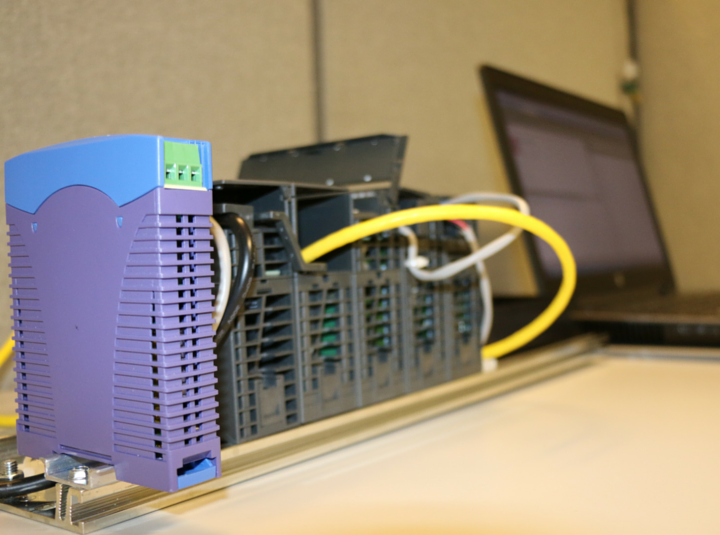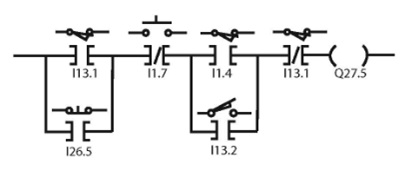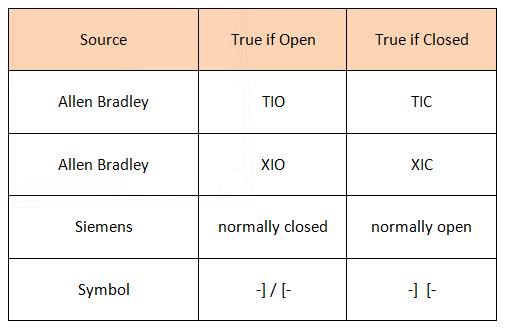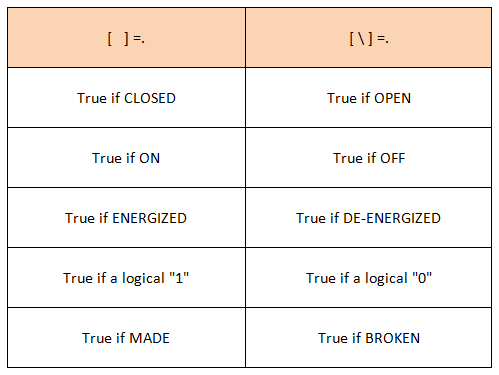- Electrical Training
- Safety
- Electrical Compliance
- Electrical Automation
- Electrical Maintenance
- Mechanical Training
- HVAC
- Codes and Standards
- Fluid Power
- Maintenance
- View All Training Programs
-
View All Electrical Safety Training ProgramsTop Electrical Safety Training Programs
- Arc Flash Electrical Safety [Based on NFPA 70E®]
- Electrical Safety: NFPA 70E Refresher
- Electrical Safety Awareness
- Electrical Safety Practical Skills for Switchgear
- Electrical Safety: Power Generation, Transmission & Distribution [based on OSHA 1910.269]
- Seguridad Eléctrica en el centro de trabajo, [Basado en el manual NFPA 70E® 2021]
- Electrical Safety, Operation and Maintenance for Medium Voltage (MV) Distribution Systems and Equipment
- Train-The-Observer: Electrical Safety Field Observer Training
Upcoming Training Programs- 02/02 - 02/03 : Live Online Training , CO Arc Flash Electrical Safety [Based on NFPA 70E®]
- 03/02 - 03/03 : Live Online Training , CO Arc Flash Electrical Safety [Based on NFPA 70E®]
- 03/24 - 03/25 : Centennial , CO Electrical Safety, Operation and Maintenance for Medium Voltage (MV) Distribution Systems and Equipment
- 04/06 - 04/07 : Live Online Training , CO Arc Flash Electrical Safety [Based on NFPA 70E®]
- 04/30 - 04/30 : Centennial , CO Electrical Safety Practical Skills for Switchgear
-
View All Electrical Electrical Compliance Training ProgramsTop Electrical Electrical Compliance Training Programs
- 2026 NFPA 70® – NATIONAL ELECTRICAL CODE® [NEC]
- Electrical Systems: SOARES Grounding & Bonding
- Electrical Systems: Hazardous Locations
- NEC® – Analysis of Changes 2020 with Practical Exercises
- NFPA 110® – Emergency & Standby Power Systems
- NFPA 70B® Standard Overview
- NFPA 70B Standard for Electrical Equipment Maintenance (8-hr for Maintenance Technicians)
- NFPA 72: National Fire Alarm & Signaling Code®
- NFPA 79® – Electrical Standard For Industrial Machinery®
- NICET I & II
- National Electrical Safety Code® [NESC]
- NEC® – Analysis of Changes 2023
- Connecticut Four Hour 2025 Electricians Continuing Education Course
- 2023 National Electrical Code® With 2023 Washington State’s Electrical Code Amendments (based on Washington Administrative Code 296-46B)
Upcoming Training Programs- 02/09 - 02/10 : Live Online Training , CO Electrical Systems: Hazardous Locations
- 03/25 - 03/26 : Live Online Training , CO Electrical Systems: Hazardous Locations
- 06/26 - 06/26 : Live Online Training , CO Connecticut Four Hour 2025 Electricians Continuing Education Course
- 06/26 - 06/26 : Live Online Training , CO Connecticut Four Hour 2025 Electricians Continuing Education Course
- 09/09 - 09/10 : Live Online Training , CO Electrical Systems: Hazardous Locations
-
View All Electrical Electrical Automation Training ProgramsTop Electrical Electrical Automation Training Programs
- Instrumentation & Process Control
- PLCs [Programmable Logic Controllers]: Automation Systems
- PLCs [Programmable Logic Controllers]: ControlLogix & RSLogix 5000
- PLCs [Programmable Logic Controllers]: Fundamentals
- PLCs [Programmable Logic Controllers]: Siemens Simatic S7
- Tuning DDC/Process Control Loops
- Variable Frequency Drives [VFD]
Upcoming Training Programs- 02/03 - 02/05 : Centennial , CO Variable Frequency Drives [VFD]
- 04/06 - 04/08 : Centennial , CO PLCs [Programmable Logic Controllers]: Fundamentals
- 05/19 - 05/21 : Centennial , CO Variable Frequency Drives [VFD]
- 08/11 - 08/13 : Centennial , CO Variable Frequency Drives [VFD]
- 11/10 - 11/12 : Centennial , CO Variable Frequency Drives [VFD]
-
View All Electrical Electrical Maintenance Training ProgramsUpcoming Training Programs
- 02/10 - 02/11 : Live Online Training , CO Electrical Print Reading: Blueprints & Schematics
- 03/31 - 04/01 : Centennial , CO Basics of Industrial Electricity
- 04/02 - 04/03 : Centennial , CO Electrical Motor Control Circuits: Troubleshooting
- 04/07 - 04/09 : Centennial , CO Fiber Optics
- 05/12 - 05/13 : Centennial , CO Basics of Industrial Electricity
-
View All Mechanical HVAC Training ProgramsTop Mechanical HVAC Training Programs
- Balancing of Water and Air Systems
- Boilers: An Operational Workshop
- HVAC: Brazing [Advanced]
- Air Conditioning & Refrigeration: Advanced
- HVAC: Air Conditioning & Refrigeration
- HVAC: Principles of Heating & Ventilation
- Chillers: Operation & Maintenance of Chilled Water Systems
- Steam Distribution Systems
- Water Treatment for Boilers and Chilled Water Systems
- EPA 608 Certification Exam Preparation & Proctoring
Upcoming Training Programs- 02/10 - 02/12 : Centennial , CO Boilers: An Operational Workshop
- 02/24 - 02/26 : Centennial , CO Chillers: Operation & Maintenance of Chilled Water Systems
- 03/02 - 03/04 : Centennial , CO HVAC: Air Conditioning & Refrigeration
- 03/05 - 03/05 : Centennial , CO EPA 608 Certification Exam Preparation & Proctoring
- 03/24 - 03/26 : Centennial , CO Chillers: Operation & Maintenance of Chilled Water Systems
- View All Mechanical Codes and Standards Training Programs
-
View All Mechanical Fluid Power Training ProgramsUpcoming Training Programs
- 03/03 - 03/06 : Centennial , CO Hydraulics & System Troubleshooting
- 06/02 - 06/05 : Centennial , CO Hydraulics & System Troubleshooting
- 06/23 - 06/25 : Centennial , CO Centrifugal Pumps
- 09/09 - 09/11 : Centennial , CO Centrifugal Pumps
- 10/06 - 10/09 : Centennial , CO Hydraulics & System Troubleshooting
-
View All Mechanical Maintenance Training ProgramsUpcoming Training Programs
- 02/05 - 02/06 : Centennial , CO Shaft Alignment with Laser Technology
- 03/03 - 03/04 : Centennial , CO Electric Motors: Understanding & Troubleshooting
- 05/05 - 05/06 : Centennial , CO Electric Motors: Understanding & Troubleshooting
- 05/07 - 05/08 : Centennial , CO Shaft Alignment with Laser Technology
- 07/28 - 07/29 : Centennial , CO Electric Motors: Understanding & Troubleshooting
Select the following link if you would like to recover a report that has been previously deleted.
NTT Blog

Relay Logic vs. Ladder Logic Symbology
Tech Tip – PLCs
Taking another lesson from our students in our PLC-Allen Bradley and Siemens classes, today’s Tech Tip addresses the confusion many technicians face when it comes to Symbology and PLCs. Technicians, coming from over 100 years of relay logic, are taught that when a contact is normally open, the resulting output is “off” and thus when a contact closes, the output is “on”.
The confusion arises between the differences between Relay Logic and Ladder Logic. PLCs can do things differently than simple relays, and thus reading their Ladder Logic with the same interpretation of Relay Logic may not produce the same results. A fact, most think the symbols in a PLC are backwards!
Try answering this question as an example:
The best description of how this instruction functions [ \ ] in a PLC program is:
A.) Normally open contact
B.) Normally closed contact
C.) A logically true condition when an input is in its low state (open)
D.) A logically true condition when an input is in its high state (closed)
Did you get the correct answer? If you did, it may be because you are more used to PLCs than relay logic. The answer is (C) – A logically true condition when an input is in its low state (open). However, for relay logic this would be a normally closed contact.
However, in the Allen Bradley (the #1 selling PLC in the USA) they refer to the contacts as (XIO) and (XIC), whereas Siemens refers to the same thing as “normally open” \ “normally closed”. Siemens is the European competitor to Allen Bradley and the #1 selling PLC outside of North America.
It may have been easier if Siemens would change its terminology to Allen Bradley’s and stop using the phrase “normally open” \ “normally closed”. This phrase, this terminology, does not match the below in PLC Ladder Logic and will get you in trouble.
How to stay out of trouble? Use the following words and thought process:

Clear as mud? Here’s a more practical example to help illustrate this concept where you have an E-STOP included in the circuit: Where (XIC) means (examine if CLOSED) meaning IF the E-STOP button is CLOSED it is in a RUN condition.
What will be the condition of the output device wired to terminal Q27.5 after the next scan?
A.) The devices is “ENABLED”
B.) The devices is “DISABLED”
The correct answer is (B) – The devices is “DISABLED”. This is because terminal I13.1 is true if open. However the ladder logic -]/[- if read like relay logic, appears to be a normally closed contact, however, in ladder logic it states True if OPEN, however the physical limit switch is shown CLOSED. Don’t do that to yourself.
Said another way…
A physical relay contact [ ] labeled “1CR” says “IF” 1CR is ON then the contact is closed. Hence “true if energized (on)”
A physical relay contact [ / ] labeled “1CR” says “IF” 1CR is OFF the contact is closed. Hence “true if de-energized (off). In a ladder [ ] wants to see the item closed, energized, on, and [ \ ] want to see the item open or off.
You see? It is not backwards, just the terminology is different. Another way to think about it is:
Let us know if you have any questions about this or other PLC topics and we’ll do our best to answer them. To discuss how you can implement PLC Hands-On Training into your company, call (855) 712-7353 or CONTACT NTT TRAINING today!
You can also of course demystify PLCs and HMIs in our popular courses where the training is over 75% hands-on:
- PLC: Fundamentals of Programmable Logic Controllers & PLC Automation Systems
- PLC: Programmable Logic Controllers
- PLC: Automation Systems (HMI programming)
- PLC: ControlLogix (RSLogix5000)
- PLC: Siemens Step 7 (Simatic Manager)
Post Author: J Gordon Fleming – NTT Training Automation Instructor & Author of “The World According to Flem”
Recent Blog Posts
- Why Electrical Safety Observer Training Is the Missing Link in NFPA 70E Compliance
- NEC: National Electric Code (2026 edition)
- NFPA 79: Electrical Standard for Industrial Machinery (2024 Edition)
- EPA 608 Certification and Training
- NFPA 72: National Fire Alarm & Signaling Code®: What You Need To Know
- Categories
- Uncategorized (5)
- Electrical Training Programs (96)
- Code & Standards (30)
- Electrical Maintenance (18)
- Mechanical HVAC (9)
- Safety (39)
- Mechanical Training Programs (75)
- Code & Standards (10)
- Electrical Safety (8)
- HVAC (19)
- Maintenance (19)
- Fluid Power (19)
- News (13)
- Onsite Training (2)
- Contractor Management (1)
- National Electric Code (8)
- OSHA Rules and Requirements (19)
- General Safety Tips (4)
- Industrial Safety (4)
- Plumbing Standards (3)
- Electrical Blueprint Reading (6)
- Natural Gas Safety (3)
- Ultrasonic Testing (1)
- PLC (11)
- High Voltage (4)
- Oil Analysis (2)
- Centrifugal Pumps (4)
- Variable Frequency Drives (6)
- Welding Safety (7)
- Chillers (3)
- Hazardous Locations (5)
- Confined Spaces (6)
- Infrared Thermography (2)
- NFPA 72 (4)
- Process Control Loops (3)
- Backflow Prevention (1)
- Electrical Grounding (2)
- Industrial Circuits (2)
- Boilers (5)
- Shaft Alignment (3)
- Hoisting and Rigging (3)
- Fiber Optics (5)
- Refrigeration (1)
- Arc Flash (8)
- NFPA 110 (1)
- Conveyor Systems (1)
- NFPA 70E (2)
- Process Instruments (1)
- Vibration Analysis (1)
- Industrial Generators (2)
- Life Safety Code (4)
- Electrical Switchgear (1)
- NFPA 79 (2)
- Steam Distribution Systems (2)
- Preventative Maintenance (2)
- Electrical Codes & Standards (5)
- Mechanical Maintenance (5)
- Mechanical Fluid Power (1)
- Electrical Safety (2)
Filter Blogs
- December 2025 (2)
- October 2025 (2)
- September 2025 (1)
- August 2025 (1)
- July 2025 (1)
- June 2025 (1)
- April 2025 (2)
- March 2025 (1)
- February 2025 (1)
- January 2025 (1)
- December 2024 (1)
- November 2024 (1)
- October 2024 (1)
- September 2024 (1)
- August 2023 (1)
- July 2023 (1)
- June 2023 (1)
- April 2023 (1)
- March 2023 (1)
- February 2023 (1)
- December 2022 (1)
- October 2022 (1)
- August 2022 (1)
- July 2022 (1)
- October 2019 (9)
- September 2019 (8)
- August 2019 (9)
- July 2019 (8)
- June 2019 (8)
- May 2019 (9)
- April 2019 (9)
- March 2019 (7)
- February 2019 (4)
- January 2019 (9)
- December 2018 (7)
- November 2018 (7)
- October 2018 (9)
- September 2018 (6)
- August 2018 (7)
- July 2018 (9)
- June 2018 (8)
- May 2018 (9)
- April 2018 (9)
- March 2018 (8)
- February 2018 (8)
- January 2018 (9)
- December 2017 (9)
- November 2017 (8)
- October 2017 (9)
- September 2017 (8)
- August 2017 (7)
- July 2017 (5)
- June 2017 (7)
- May 2017 (8)
- April 2017 (3)
- March 2017 (7)
- February 2017 (3)
- January 2017 (4)
- December 2016 (7)
- November 2016 (4)
- October 2016 (7)
- September 2016 (5)
- August 2016 (6)
- June 2016 (1)
- May 2016 (2)
- April 2016 (2)
- March 2016 (1)
- January 2016 (2)
- October 2015 (1)
- August 2015 (1)
- July 2015 (3)
- May 2015 (1)
- January 2015 (3)
- April 2014 (4)
Our Mission:
Deliver solutions to our clients (and their global workforce) designed for safety, productivity and profitability.
Our Vision:
Empowering clients and their employees to be safe and skilled.
NTT Training Inc. has been accredited by the Accrediting Council for Continuing Education & Training (ACCET). 
 Better Business Bureau
Better Business Bureau
A Training Division of ECPI University



